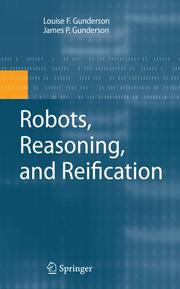Detailansicht
Robots, Reasoning, and Reification
ISBN/EAN: 9781441946805
Umbreit-Nr.: 1300516
Sprache:
Englisch
Umfang: xv, 201 S.
Format in cm:
Einband:
kartoniertes Buch
Erschienen am 05.11.2010
Auflage: 1/2009
- Zusatztext
- This work was created from the statement "But, all you have to do is make the robot recognize its surroundings. Salamanders do it, and how complex are they?" Little did we know what a long path was started with those simple words. This book is a small step on that path, which we hope leads to robots that can serve as true and useful assistants to humans. At the least, we hope for some help with the tasks that are described by the 3 d**** words (dull, dirty, or dangerous). Fair warning, this work is a synthesis of ideas from many disciplines. As such, we have depended on the work of many other researchers and philosophers. The heart of this work, the lens model, comes from the work of Egon Brunswik. Even though he died in the 1950's, his ideas are still strong enough to resonate into the 2000's and into our robot. Another researcher who's work has greatly in?uenced this work is Walter Freeman, Professor Emeritus of Neurobiology at the University of California, Berkeley. We have relied heavily on his work on preafference and attention to guide the development of our robot. In addition, we have used research from a myriad of different ?elds. Our huge thanks to all the researchers who's work we used to synthesize this new theory. Denver, CO Louise F. Gunderson July 2008 James P.
- Kurztext
- Robots, Reasoning, and Reification focuses on a critical obstacle that is preventing the development of intelligent, autonomous robots:the gap between the ability to reason about the world and the ability to sense the world and translate that sensory data into a symbolic model. This ability is what enables living systems to look at the world and perceive the things in it. In addition, intelligent living systems can extrapolate from their mental models and predict the effects of their actions in the real world. The authors call this bi-directional mapping of sensor data to symbols and symbolic manipulation onto real world effects reification. After exploring the gulf between bottom-up and top-down approaches to autonomous robotics, the book develops the concepts of reification from biologically based premises, and follows the development into the necessary components and structures that can be used to provide equivalent capabilities for intelligent robots. It continues by demonstrating how the reification engine supports both learning from experience and creating new behaviors and representations of the world.
- Autorenportrait
- InhaltsangabeSome background material on probability and biology.- Using Cognition and Physiology to Build a Cognitive Model.- Representation.- Perception/Action System.- Design of a Reification Engine.- Bridging the Sensor to Symbol Gap.- Working Memory and the Construction of Personal Experiences.- Semantic Memory and the Personal Rough Ontology.- Deliberative System.- Putting it All Together.- Testing.- Where do we go from here.
